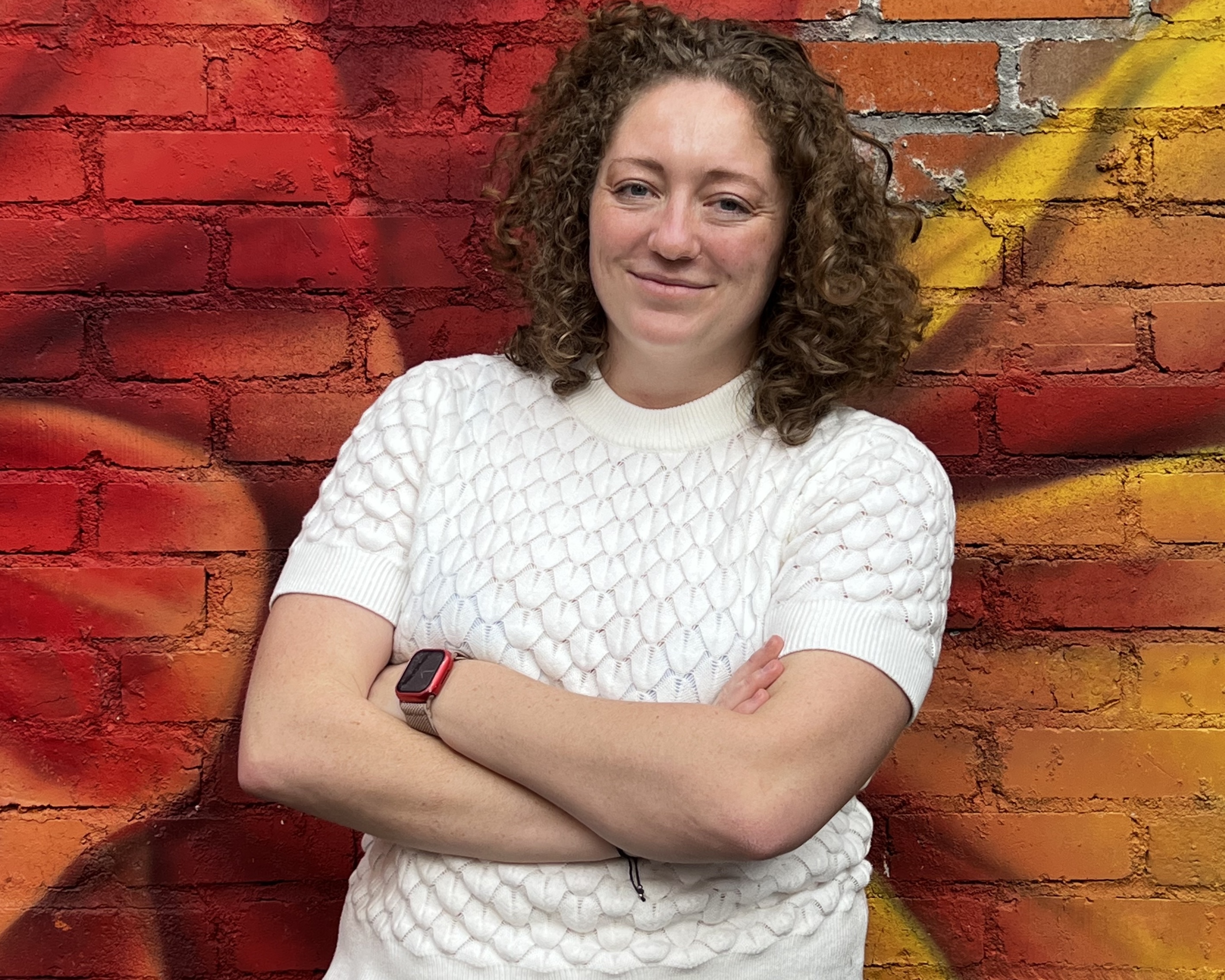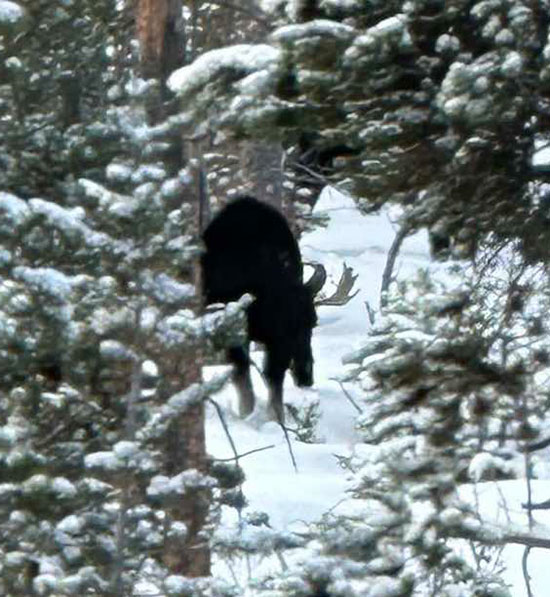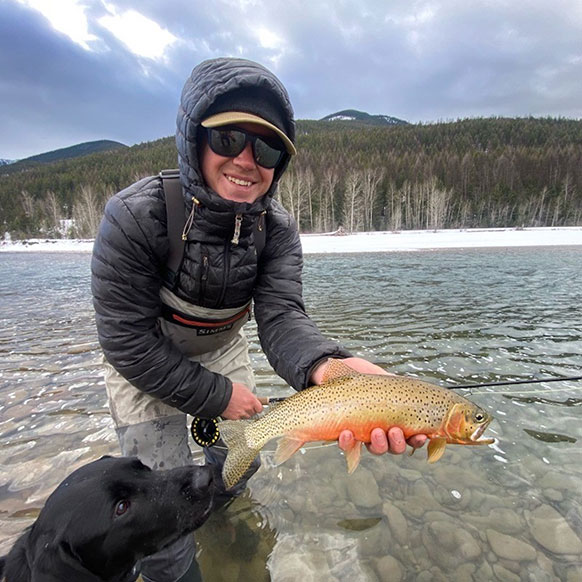UW Graduate Students Receive Biodiversity Institute Research Grants
Nine graduate students studying biodiversity at the University of Wyoming received nearly $200,000 in grants from UW’s Biodiversity Institute (BI).
The BI Graduate Student Research Enhancement Grants are awarded each year to multiple master’s and doctoral students to enhance or expand ongoing research.
Through generous donors, the BI funded nine projects that investigate a wide range of biodiversity topics of conservation concern in Wyoming, the region and around the world. In addition to world-class science, successful applicants had to demonstrate how they would communicate their research to diverse Wyoming audiences and assess their communication’s effectiveness.
Jordan Von Eggers, a doctoral candidate from Redmond, Wash., says she is thrilled to receive the BI Graduate Student Research Enhancement Grant.
“Support from the Biodiversity Institute will allow me to jump-start my Ph.D. program and get one step closer to understanding how biodiversity is created and maintained in alpine aquatic ecosystems,” Von Eggers says.
Tanner Hoffman, a master’s degree student from San Diego, Calif., is the first student to receive an award from the Hardy Family Fund. Hoffman is investigating the short- and long-term effects of fire on soil microbial and vegetation community recovery in the sagebrush-steppe ecosystems adjacent to forests. Beginning this fall, he plans to include community members in his research by training them to help sample his many sites.
The Hardy Family Fund was established to support a research project that incorporates community science that helps the public understand the impacts of the 2020 Mullen fire in the Medicine Bow National Forest.
“I am extremely happy with the choice of Tanner Hoffman to launch the Hardy Family Community Science Excellence Fund. His research on the interactions of cheatgrass, herbicides and the soil biome are all personal concerns of mine,” Bridget Hardy says. “I also see solutions in this arena as potential bridges between our academic community and our local ranching community, since we all share the drive to contain cheatgrass and mitigate wildfires.”
Riverton’s Christie Wildcat, a master’s degree candidate, is the first recipient of the Richard Baldes Award. The award is for Native American students conducting biodiversity research relevant to the Eastern Shoshone and Northern Arapaho tribes on the Wind River Indian Reservation.
Wildcat is exploring the tension between energy development, which creates jobs, and the preservation of biodiversity, ecosystem services and culturally significant sites. She also will observe tribal business council meetings and interview tribal members about decision-making on natural resources issues.
Biology major Albert Mason, from Lander, also received the Richard Baldes Native American Excellence Fund in Biodiversity Conservation award, which will enable him to communicate the results of his nearly-completed research project, as well as his experiences as a Native American student at UW, Central Wyoming College and Lander Valley High School.
Mason’s research focuses on the potential role of soil chemical composition and water biogeochemical characteristics as determinants of mule deer migration routes on the Wind River Indian reservation.
Recipients of the BI grants also were able to apply for grant supplements that were made available by the support of donors, such as the Don and Judy Legerski UW Teton Graduate Student Scholars in Biodiversity Fellowship, which supports biodiversity research associated with the mission of the UW AMK Ranch in Grand Teton National Park; the Baldes Fund for research relevant to Wind River Indian Reservation communities; and the Ann and Richard Boelter Biodiversity and Conservation K-12 Excellence Fund to support classroom education based on UW research.
The BI Graduate Student Research Enhancement Grant recipients, listed by hometowns, names, UW departments and project titles, are:
Atlanta, Ga. -- Janey Fugate, Department of Zoology and Physiology, “How do Ungulates Learn to Migrate? A Century-Long Case Study with Yellowstone Bison.”
Charleston, S.C. -- Bailey Kirkland, Department of Economics, and Haub School of Environment and Natural Resources, “The Natural Wealth of Wyoming Elk and the Implications of In-State and Out-of-State Hunting Prices.”
Fountain Valley, Calif. -- Courtney Garrity, Department of Zoology and Physiology, and Haub School of Environment and Natural Resources, “Dispersed Camping Characteristics and Impacts on Wildlife and Natural Resources in the Jackson Hole Highlands, WY.”
Greenwood, Ind. -- Christina Sluka, Department of Zoology and Physiology, and Program in Ecology, “Variations in Raccoon Behavior and Morphology Across Urbanization Gradients.”
Jackson -- Bridger Huhn, Department of Botany and Program in Ecology, “Testing Biophysical Mechanisms to Explain and Predict Rare Plant Locations in the Greater Yellowstone Ecosystem.”
Lander -- Mason, Department of Botany, “Is Biodiversity Driving Mule Deer Migration Paths on the Wind River Indian Reservation? A Collaborative Research Project.”
Laramie -- Christine Bell, Program in Ecology, Department of Zoology and Physiology, “Investigating the Status of Declining Bumble Bees (Bombus spp.) in Wyoming.”
Nanyuki, Kenya -- Douglas Kamaru, Department of Zoology and Physiology, “Linkages Between Mutualism Breakdowns, Landscape Change, and Predator-Prey Dynamics in Human-Occupied Savanna.”
Nevada City, Calif. -- Jeff Baldock, Department of Zoology and Physiology, and Program in Ecology, “Evaluating the Role of Spring-Fed Streams to Snake River Cutthroat Trout.”
Redmond, Wash. -- Von Eggers, Department of Geology and Geophysics, and Program in Ecology, “Understanding Aquatic Biodiversity Consequences of Multiple Stressors Across the Western U.S.”
Riverton -- Wildcat, Department of Anthropology, and Haub School of Environment and Natural Resources, “Engaging the Northern Arapaho Tribal Community in Environmental and Energy Decisions on the Wind River Reservation.”
San Diego, Calif. -- Hoffman, Department of Ecosystem Science and Management, “Recovery of Below- and Aboveground Biodiversity Following the Mullen Wildfire.”
To learn more about the Biodiversity Institute, research projects or grants, visit www.wyobiodiversity.org.
Share This Post
Social Media
Latest News



Archives
- All
- December 2025
- October 2025
- August 2025
- July 2025
- June 2025
- May 2025
- April 2025
- March 2025
- February 2025
- January 2025
- November 2024
- October 2024
- September 2024
- August 2024
- July 2024
- June 2024
- May 2024
- April 2024
- March 2024
- February 2024
- January 2024
- December 2023
- November 2023
- August 2023
- July 2023
- April 2023
- September 2022
- August 2022
- July 2022
- June 2022
- May 2022
- April 2022
- March 2022
- February 2022
- January 2022
- December 2021
- November 2021
- October 2021
- September 2021
- August 2021
- May 2021
- April 2021
- March 2021
- October 2020
- August 2020
- July 2020
- January 2020
- March 2019

